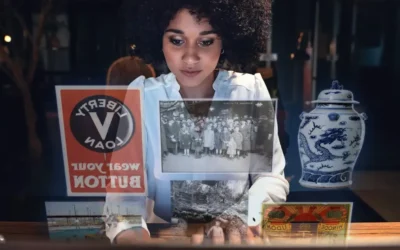5 Steps to Museum Volunteer Project Success

Rachael Cristine Woody
Museums use volunteers for a variety of projects depending upon their skill and interest. From docent tours to cataloging museum objects online, volunteers are an integral part of many museum operations.
See this previous Lucidea post on how to strategically leverage museum volunteers.
Museum Volunteers are Here to Help
While volunteers may be “free”, they are still professionals working within a museum, and they should be treated accordingly. During my time in museums I’ve often seen volunteers allowed to “do what they want” with little to no supervision or support. I think it’s important to remember that volunteers come to the museum because they care about the museum and wish to support its mission through their time and talent. As museum staff working with volunteers, it’s your responsibility to provide the training and support necessary for volunteers to be successful.
5 Steps to Museum Volunteer Project Success
Volunteer projects by their very nature can and should be scaled to each volunteer’s knowledge and abilities. Here are five steps to successfully set up a volunteer project for success:
- Gauge Interest: Discuss the potential project with the volunteer to guage interest. If they’re not interested they won’t be as committed to conducting the project correctly. Ask for their buy-in, and if they’re interested ask for their commitment to see the project through to the end.
- Define Project Success: Before the project begins, be clear about scope, timeline, and what outcomes the museum hopes to achieve. A successful project includes specifics on when project milestones should be met and how. Knowing what success looks like will help the volunteer better understand what they’re working towards.
- Deliver Clear Project Directions: Provide volunteers with clear directions, training, and any other resources they may need. See this previous Lucidea post on how to effectively train volunteers.
- Periodically Check-In: Conduct regular check-ins with volunteers. (I highly recommend scheduling them to ensure they happen). Ask how the project is going and explore what challenges they may be facing. Ask them to assess whether they’re on track to meet project milestones. Most importantly, ask if they need anything or have any questions. Sometimes volunteers don’t want to “bother you” or think their question may be “stupid”. By asking, by being open and present with them (and not rushing off to a meeting) it will invite them to share their concerns or questions. This is critical, because if they feel they can’t ask you questions or share bad news they may never approach you. And this will absolutely impact project success.
- Celebrate: Celebrating success is an important component of setting up a great long-term relationship with that volunteer. Celebrate when they reach milestones. Show gratitude for their time or when they’ve just completed an arduous part of the project. And definitely celebrate and publicly acknowledge when they’ve completed the project.
Conclusion
You may have noticed that my five steps to volunteer project success echoes how you may already manage other museum professional staff. That’s because volunteers are professional staff. By asking for their buy-in, defining project success, providing the training and check-ins they need, and celebrating with them when they successfully complete a project, you will prove to the volunteers that you value them as part of the museum team.

Rachael Cristine Woody
Consultant, author, and blogger Rachael Cristine Woody advises on museum strategies, collections management and grant writing for a wide variety of clients. Read more of Rachael’s posts here. Learn about Lucidea’s Argus solution for museum collections management and digitization, which can be used to train volunteers.
Similar Posts
Lucidea’s Lens: Knowledge Management Thought Leaders Part 90 – Patrick Lambe
Patrick Lambe is Owner and Founding Partner of Straits Knowledge. He is a consultant and researcher in knowledge management and e-learning.
How Archives Can Enrich Museum Collections Online
Staffed archives are in constant motion in their attempt to provide and broaden access to the archival collections.
Researching with GenAI: Tools & Tips for Special Librarians
When GenAI first became widely available, there was a great deal of discussion about how it would “hallucinate”—that is, make up content and sound very sure of itself when doing so.
Ensuring Long-Term Access to Digital Archives
Long-term preservation is essential to ensure digital archives remain accessible and usable.




Leave a Comment
Comments are reviewed and must adhere to our comments policy.
0 Comments